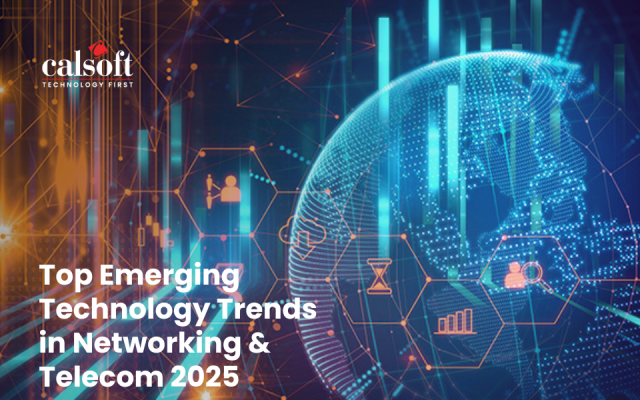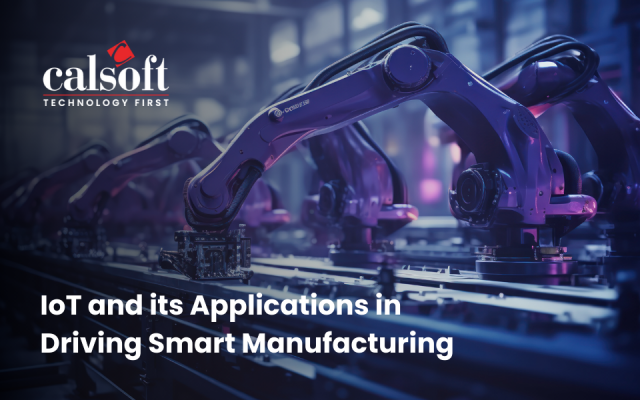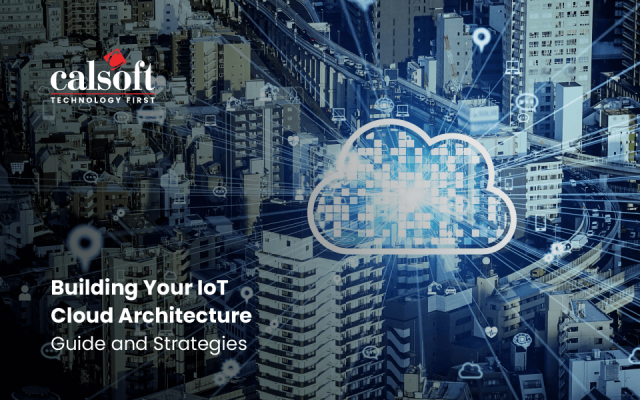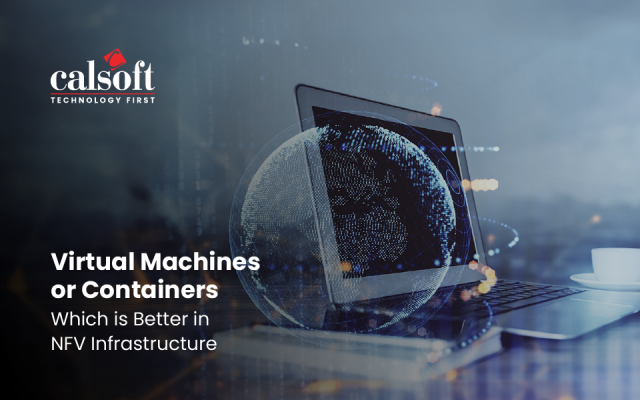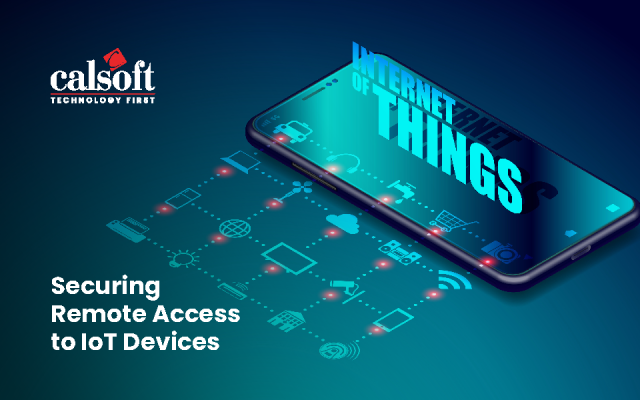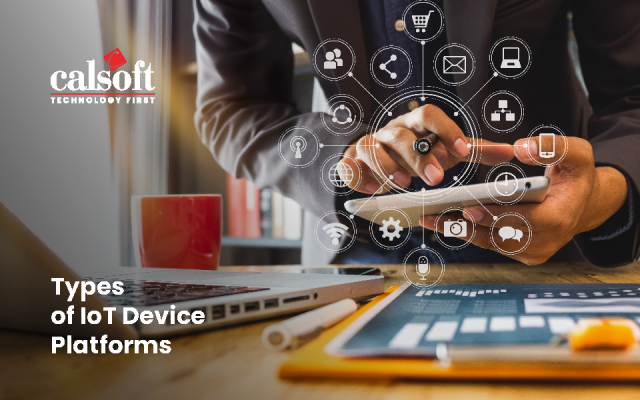5G technology is rushing into the future without looking back. According to Eben Albertyn, Chief Technology Officer at Vodafone Ziggo, “The network of the future is already being built as we speak. 5G is an important part of that. The speed of technological developments that bring about countless new, smart opportunities enriching our life is unprecedented.”
5G is a leap into the digital world where this technology enables connection between things, data, and applications in a smart networked environment.
Engineered to deliver unprecedented scalability for an internet that goes beyond smartphones, computers, and laptops, it is more about connecting things. Yes, we are talking about IoT or the Internet of Things. This is why it is not wrong to say that 5G is dramatically changing the way exchange of information and interactions are happening in the world around us.
There are several examples of IoT that we make use of in our daily lives. Right from giving verbal commands to Alexa and asking her to change the music or dim the lights to smart TVs, driverless cars, temperature sensors, and pressure sensors are just a few of them.
According to Ericsson Mobility Report, the growth trend of 5G will continue to rise, with global 5G subscriptions expected to reach 6.3 billion by 2030, accounting for 80% of mobile data traffic.
To get more intel let’s review some IoT statistics. The global Internet of Things (IoT) market size is projected to grow to USD 4,062.34 billion by 2032, exhibiting a CAGR of 24.3%
Wi-fi makes up 31% of all IoT connections, whereas Bluetooth accounts for 25% and cellular IoT i.e., 2G, 3G, 4G, 5G, LTE-M, and NB-IoT sum up to 21% of global IoT devices.
Well, these numbers might look overwhelming, but they help us understand the gravity of these two booming technologies that are set to change the world of communication.
The primary aim of this blog is not just to limit the information to 5G and IoT but to get deeper to understand how 5G’s Massive Machine Type Communication (mMTC) and IoT synergize and enable each other to realize both these technologies in the best possible manner.
Overview of the Intersection of 5G and IoT: Accelerating the Future of mMTC
With the increase in dependency on technology, IoT devices are garnering popularity at a high rate. This is the primary reason why we can undoubtedly state this technology is leading the way for a smarter, more dynamic, and more connected society. On the bright side, the advent of 5G acts like a catalyst for IoT and is set to deliver ubiquitous connectivity, higher data rate, ultra-low latency, and enhanced energy efficiency for billions of connected devices in the coming years. As stated by RT Insights in one of its reports, 5G IoT connections are forecasted to rise by 1,100% by 2026. Additionally, it is extremely important to know that one of the most promising use cases for 5G IoT that also lays the foundation of our blog is massive Machine Type Communications (mMTC), which connects large numbers of low-powered devices (sensors) to the network to enable a wide variety of applications.
mMTC is a primary technology to achieve the model of a fully connected world in 5G IoT. mMTC roll-out becomes a critical challenge for cellular networks from an operational and management perspective, with massive access and network congestion.
Trifecta Powering the Future of IoT and 5G Communications
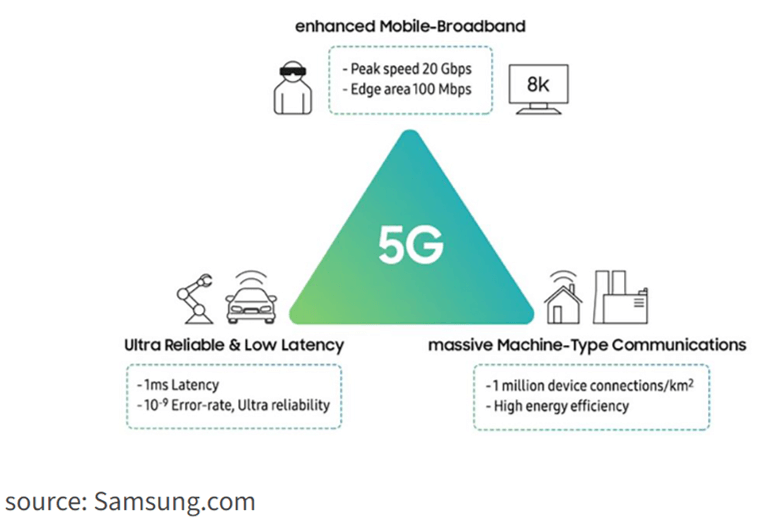
The image above gives a quick overview of the three important pillars in the realm of 5G technology. Enhanced Mobile Broadband (eMBB), Ultra-Reliable & Low Latency Communications (URLLC), and Massive Machine-Type Communications (mMTC). These elements are extremely important as they support 5G to achieve aspects like high-speed data transfer, extremely low latency, and the capacity to effortlessly connect numerous devices, facilitating advancements in applications such as 8K video, autonomous vehicles, and smart cities.
Decoding the Triangle
Before we get to understand the three essential elements of the 5G triangle, let us get you some backdrop!
Are you aware of the force that makes the use of mobile phones a seamless affair even when you’re traveling outside your home country? Well, the credit goes to the International Telecommunication Union (ITU), who is responsible for laying the sets of global ICT guidelines. For 5G, ITU collaborates with the 3rd Generation Partnership Project (3GPP), which develops technical standards. Together, they established eMBB, URLLC, and mMTC—key innovations that define 5G’s capabilities. Here, let us explore in detail what is mMTC.
Massive Machine-Type Communications (mMTC)
This concept can be thought about as connecting a huge or as the name suggests, a massive number of things across the IoT spectrum. mMTC primarily focuses on connecting a large (really large) number of devices in each location/area. Quantifiably, this can be up to 1 million devices per square kilometer (now that’s a massive number in the most superlative form). But the point to remember is that these devices are the ones with low data requirements and low energy consumption.
What does this exactly mean? Here are a few instances that can clear the air. By utilizing a large number of connected sensors, potential mMTC applications could include scenarios such as smart agriculture. In this context, sensors could be employed to monitor and respond to small changes in growing conditions across a wide area. This would allow for targeted and near-real-time responses aimed at optimizing growth rates.
Additionally, the technology could facilitate similar functions in urban environments, allowing for near-real-time data collection and response. This could aid in traffic management, the optimization of electric grids, as well as in factory settings for production management, quality assurance, and shipping. Furthermore, the technology could be utilized in shipping fleets to monitor routes, efficiency, and maintenance needs, among other potential applications.
Key Enablers Enhancing 5G mMTC for Optimal IoT Performance and Vice-Versa
5G service categories such as 5G eMBB, URLLC, and mMTC help us develop smart systems for safer transportation, planned farming, remote patient monitoring, digitized logistics, smart grid, and smart traffic management systems, among other things. The future is in 5G.
Several advancements are required in IoT networking to enable mMTC services in 5G. Let’s explore the key advancements and technologies that can transform IoT networking to enable diverse 5G services.
Cellular and Non-Cellular Technologies: LPWAN (Low-Power Wide Area Network) technologies support long-range communication between low-power devices including sensors to realize various IoT applications.
The table below gives a clear differentiation between cellular and non-cellular technologies enabling IoT.
| Technology | Type | Description |
| Narrow-Band IoT (NB-IoT) | Cellular | It is a 3GPP standardized technology that operates on licensed spectrum bands. NB-IoT uses existing cellular infrastructure, which simplifies deployment and provides ubiquitous coverage. |
| LTE-M | Cellular | Long Term Evolution for Machines (LTE-M) is the shortened term for enhanced machine-type communication low power wide area (eMTC LPWA) technology. It supports very low-latency services |
| LoRAWAN | Non-cellular | Operates in unlicensed frequency bands, which reduces the cost and complexity of deployment. |
| Sigfox | Non-cellular | Sigfox operates in unlicensed industrial, scientific, and medical (ISM) brands, and it provides low-bandwidth communication with low power consumption, which enables long battery life for devices. |
5G New Radio (5G NR): 5G NR is the next-gen standard laid for wireless communications for mobile telecommunication. The NR, which stands for New Radio, sheds light on the new air interface deployed to transmit and receive 5G signals. Overall, this technology is engineered to deliver lower latency, higher system capacity, and massive device connectivity and all this is offered while consuming less energy.
Third Generation Partnership Project (3GPP) Release 15 to 18 drives the 5G expansion for IoT. 3GPP Release 15 to 17 focuses on the unified and scalable air interface 5G NR to support the coexistence of a wide range of 5G device categories. Release 17 introduces 5G NR Light bringing new capabilities for IoT such as optimized power consumption and coverage recovery through side links.
3GPP Release 16 and 17 comprise positioning enhancements such as 3D positioning, cm-level accuracy, reducing positioning latency, and enhancements in reliability in specific areas like Vehicle-to-Everything (V2X) and factory positioning.
Discover how Calsoft enabled seamless 5G network function deployment on AWS Local Zones
Edge Computing: Edge computing is a distributed computing paradigm that brings computation and storage closer to IoT devices or at the network edge, reducing the volume of data that needs to be communicated over the network. This enhances the quality and performance of mMTC services with low latency and improved security.
Artificial Intelligence (AI): The role of AI as its name suggests in the IoT spectrum is to make devices intelligent. The potential of AI can be used to analyze massive amounts of data generated by IoT devices and abstract valuable insights from it. Additionally, it can also be used to improve the performance of mMTC services by protecting device behavior, identifying anomalies, and optimizing network resources.
Connectivity through Cloud SIM: To support flexible IoT deployments in the market, on-demand cellular connectivity without depending on physical SIMs (eSIMs) becomes the need of the hour. Cloud SIM becomes the best option, which connects IoT devices on demand to the network, by locating the SIM functions securely to the cloud. With Cloud SIM, the SIM functionality is embedded in the hardware of the device and can be programmed remotely to connect to different cellular networks. Cloud SIMs can be updated remotely over the air, enabling greater flexibility and scalability when compared to traditional or physical SIMs.
Network Slicing: In the IoT spectrum, network slicing is one of the important parts of the puzzle as it is a type of architecture that enables the creation of independent, virtual slices within the physical network. Each of these slices is isolated to cater to a specific set of needs.
This technology is essential in the context of IoT as all projects here are reasonably network-intestine. However, it is vital to understand that all elements of a project have different requirements especially since IoT projects often are broad and diverse and encompass a range of different devices and applications.
With network slicing, customization of network parameters for different apps is possible with effective allocation of resources. For example, essential operations will have more steep service level requirements and always take priority, even in critical conditions.
Since network slicing is an important technology when it comes to telecommunications and IoT, you can get more equipped on the topic, by checking out our blog on “Network Slicing for IoT: Tailoring Connectivity for Different Applications.”
Use Cases of 5G mMTC in IoT
5G mMTC in IoT is a technology that can be applied in various situations to solve a range of problems. By now we are well aware of the role of mMTC in 5G networks and how it works toward enabling the growth of a wide range of new-gen IoT applications, that were not possible with the previous generations of wireless networks. So, let’s go a step ahead and find out the top three use cases of 5G mMTC in IoT where the technology is spearheading to make a significant difference.

Smart Cities
As urban areas are getting more crowded with more and more people migrating, the need to improve basic facilities is becoming a growing necessity. However, a smart city makeover is something that is the need of the hour. Deploying sensors that collect data from the streets, buildings, and other locations, can be counted as the first step toward building smarter cities. As in this entire process data collection plays a crucial role, it can be further used for analysis to make necessary changes.
Today, as technology grows at an unprecedented rate, expansive IoT networks are developed to build the kind of infrastructure needed in a smart city. To enable smart city development based on IoT, connectivity between various citywide services and facilities is required. The 5G mMTC service category helps ensure city resources are connected. 5G mMTC services are specially designed for IoT systems. The 5G mMTC use case of IoT-based smart cities supports small data packets, uplink center transmission, sporadic transmission, and power optimization.
Intelligent Transportation Systems
With the ultra-reliable connectivity of 5G, connected cars and smart infrastructure can communicate in real time, enhancing road safety and efficiency. The low latency of 5G enables immediate data exchange between vehicles, traffic systems, and pedestrians, supporting critical functions like collision avoidance.
In addition, vehicles can transmit large volumes of mapping and traffic data to smart city infrastructure, optimizing traffic flow and reducing congestion. The dense connectivity provided by 5G’s massive machine-type communications (mMTC) allows more vehicle sensors to work in sync with transportation networks, paving the way for autonomous driving and AI-driven traffic management.
Smart Healthcare
The rise of 5G, with its advanced capabilities in massive machine-type communications (mMTC), is revolutionizing healthcare by enabling more efficient and connected health services. With its ultra-fast speeds and low latency, 5G supports smart healthcare applications such as remote patient monitoring, virtual consultations, and even remote surgery. By leveraging IoMT (Internet of Medical Things) devices, healthcare providers can reduce the need for in-person visits while delivering high-quality care.
As 5G networks expand, the ability to transmit large amounts of real-time data from medical devices will enhance patient care and improve healthcare outcomes.
The Way Forward
To make the most of 5G in the realm of IoT, mMTC plays a crucial role. By leveraging the goodness of mMTC in this spectrum, it enables ultra-low latency connections, and supports improved performance, with low energy consumption.
Today technology is growing at a faster pace than ever. The 5G network has also been designed in an all-encompassing manner – from quickly deploying customized IoT services to catering to the needs of multiple vertical industries such as Healthcare, Manufacturing, and more. To deal with this massive connectivity, it is essential to revolutionize IoT networking for connected devices.
Calsoft being a technology-first company, we pioneer in the telecommunication space with over two decades of experience and expertise in this arena.
If you too are keen on capitalizing on or improving your networking and telecom abilities, explore our offerings.

